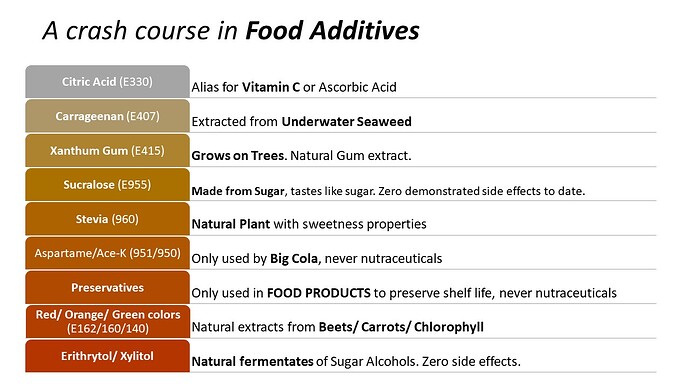Of Clean labels and Half Truths
There’s a new wave in the D2C food market and it’s called CLEAN LABEL. Given all the noise about this new phenomena, let’s deconstruct the concept.
BIG BRAND = BIGGER SCRUTINY
The bigger a brand gets, the more it is under public and legal scrutiny. That explains the high compliance levels of large main stream brands (Lever, P&G, Marico, ITC, Dabur etc.). Small D2C brands on the other hand, tend to escape the regulatory radar and this oftentimes leads to unsubstantiated and gimmicky label claims.
While that’s fine whereas shoes, bags, perfumes, cosmetics are concerned, it’s a problem when it comes to food, since food goes inside you, not on you.
Let’s take the case of the latest ‘CLEAN LABEL’ craze. Every nutraceutical/food brand now contains one or more of the following claims-
- All Natural
- Real ingredients
- 100% Clean label
- Nothing artificial
- No chemicals
- No preservatives
- No ADDED sugar
- Made with only 4-5 ingredients etc.
Let’s break this down and analyze what exactly are these so called ‘artificial chemicals/ingredients’ which are being purported as harmful by some marketeers
(SEE GRAPHIC).
As you will realize, food additives are nothing but functional ingredients and in most cases, extracts of food itself. They possess properties to improve the taste & texture of packaged food. There is absolutely nothing insidious or natively harmful about having them in your food product at GMP levels. Heck I’m worse off with that pesticide-laden Broccoli Salad of mine or that sugar-loaded Dates Bar!
FRONT-OF-PACK theory
Vilifying large brands has now become fashionable and mission-driven to some extent. Examples- Maggi, Cadburys, Bournvita …etc… There’s again more to this than meets the eye. Having worked closely in R&D and Nutra manufacturing for close to a decade, I can tell you the extent to which the large brands go just to meet/exceed compliance and safety. D2C on the other hand can be pretty questionable at times.
The decision NOT to list ingredients at the front-of-pack for example, is a simple DESIGN DECISION. It has nothing to do with concealing ingredients. Similar to why I wouldn’t wear my T-shirt inside-out or my pants upside-down (unless I want to make a statement and stand-out!)
The Front-of-Pack is conventionally for displaying the product name, USPs, functions etc… while the back-of-pack is for listing out nutritional panels, declarations, ingredients etc… It has nothing to do with the conspiracy theory that food marketeers are trying to conceal something. After all, how difficult is it to simply flip the pack and read the ingredients?
The 3 ingredient CHICKEN MASALA
Here’s my CLEAN LABEL recipe to make Chicken Masala:
- Chicken
- Onions
- Tomatoes
No masalas, no condiments, no seasonings, no garnish, no ghee/oil, no ginger/garlic, nothing. Now I’m going to name it CLEAN CHICKEN MASALA. Get the picture?
Fewer ingredients DOES NOT mean cleaner product. It’s a perception (or some might say deception). Food additives as shown above (see graphic) are similar to food masalas required to season your formulation and make it more palatable and improve the sensory experience. What’s wrong with that?
They’re well researched, food based, CODEX approved and have gone through rigorous safety studies before being approved at GMP levels by World Health Bodies. In fact some might argue that they’re safer than your pesticide laden vegan salad.
THE WHITE ELEPHANT IN THE ROOM
Do you remember our good old friend SUGAR. Did you know that it’s a natural disaccharide made up of 1 molecule each of Fructose and Glucose. And is manufactured from 100% NATURAL Cane and/or Beet.
- Is it clean? NO.
- Is it hidden in plain sight? YES.
- Where? Front-of-Pack.
Here are some aliases for Sugar
- Dates
- Jaggery
- Honey
- Cane
- Fruit
- Coconut sugar
The rationale that all of the above are ‘CLEAN’ while stand-alone sugar is bad is like throwing all logic out of the window.
Here are the usual defenses for the above ‘Clean Sugar Sources’ by some marketeers
- They’re ALL-NATURAL (well so is table sugar- remember cane + beet)
- They contain FIBER which reduces their Glycemic load (if fiber was the qualifier in negating the ill effects of sugars, then I’ll just add some ISABGOL to my table sugar! And voila! I have ‘clean sugar’ now!
BOTTOMLINE
While the Clean Label craze gains momentum, we need stronger guide rails in place before getting carried away by propaganda. Here are the key take-homes:
- Every organic & edible substance in nature has a chemical formula. Simplest Examples (PROTEIN- RCH(NH2)COOH CARBOHYDRATE- (CH2O)n FAT- CH3(CH2)nCOOH). Are they artificial chemicals? No.
- A food ingredient doesn’t become harmful just by virtue of having a chemical formula. That’s an incorrect filter to apply while scanning your food.
- Fewer ingredients does NOT mean cleaner product. A formulator is like a chef crafting the finest possible recipe for his customer with safe and effective food ingredients (active and functional). The number of ingredients he uses to craft his recipe has no role to play in qualifying his recipe as CLEAN or UN-CLEAN.
- Listing ingredients Front-of-Pack is simply a DESIGN DECISION and NOT a conspiracy theory to conceal ingredients. After all, it does not take much effort to simply flip over the pack and read the ingredients.
Have you come across any products which led you into the above trap? Comment below.
Disclaimer: this piece is meant to be purely educational in nature and not derogatory to any brand/s. While I’m a strong supporter of D2C brands (Neulife is one of them), I’m also an advocate of stronger regulation to protect consumers being one myself.
